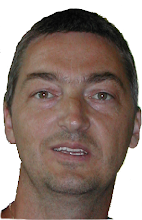For my birthday I got a
Vipukirves axe, which is specially designed for chopping firewood. In my role as
gentleman farmer I try to keep my household with firewood. Sometimes chopping is required, and an axe is an obvious tool.
However, the Vipukirves changes the process of chopping wood entirely, especially for wide segments of logs.

Consider the first picture - it shows the unique profile of this axe, and a promising firewod candidate. Also shown is a "belt" around the candidate. I used the inner tube from a bicycle tire, but I suspect that a car tire would have been better. At least, that is what is often used in instructional films on Youtube.
Anyway, the purpose of the "belt" is to keep pieces from escaping and keep the workpiece on the base during chopping. Even with a regular axe, the chopping process has a tendency to eject the log pieces in different directions so that they fall off the base. With the Vipukirves the smaller piece can be thrown away quite violently. Therefore the belt, so that the workpiece remains on the base and you do not have to traverse the entire yard to gather the chopped firewood.
So what about the result? Well, this next picture shows the same log segment after being chopped.

As you can see the pieces are more rectangular than the usual circle segments an ordinary axe would produce. The belt has kept the pieces in place so that they can easily be moved to a stack for drying.
This was my first experience with the Vipukirves, and I am not fully trained yet. I still had to use my hydraulic splitter for log segments with many branches. But the new axe is definitely a useful tool. I must be on the lookout for a used car tire though. The "belt" I used did not work as well as a wider tire would.






























